Smart #1 review: it might be fresh, but this EV isn’t fleek
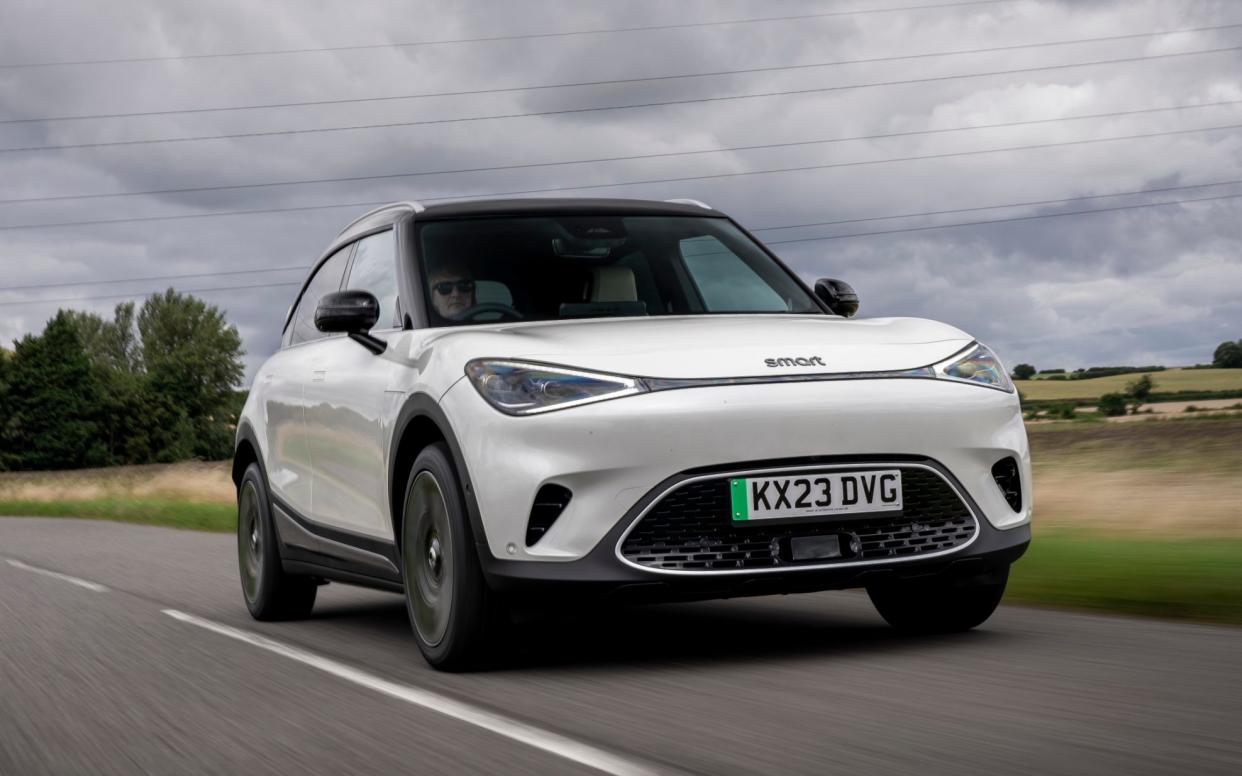
Before we start today, a bit of an admission: this car is not for me. What I mean by that is I’m probably not the type of person for whom the Smart #1 is intended. This is a car designed for bright young things; fashionistas, influencers, people for whom TikTok means more than just the unstoppable march of time. I, by contrast, am a balding, middle-aged dad of two, an owner of multiple pairs of slippers, whose primary preoccupation most days is, ironically, the unstoppable march of time. When it’s not wondering where I’ve left my glasses, that is.
The first time I read about the #1, I referred to it as the ‘Smart Number One’, and within a radius of five miles around my location, every single teenager was overcome by a hot wave of nausea as their cringe radars picked up on my faux pas. (It is, of course, pronounced ‘hashtag one’, à la Instagram and Twitter, or X, or whatever it calls itself these days.) Suffice it to say that I am not the target demographic.
And so, for the purposes of this review, I shall don an inverted baseball cap, hike a skateboard up over my right shoulder, exclaim “How do you do, fellow kids?” and attempt to venture bravely into the mindset of the type of people that will buy the #1. Join me, if you dare…
Pros
Stand-out styling, both inside and out
Lots of range and power for the price
Roomy rear seats
Cons
Some terrible usability decisions
Unsettled low-speed ride
Small boot
Smarty pants
From outside, there’s certainly no mistaking the #1. It’s a bit of an odd fish, but undoubtedly eye-catching, and as is necessary on a car with the fashion-conscious in mind, there’s an array of bright paint colours and contrasting roof colourways that allow it to be personalised.
Think of it as the kind of car you’d buy if a Mini Electric is just a bit too small. You’d struggle to call it “peng” (that means good-looking, by the way), but it’s certainly “fresh” (smart).
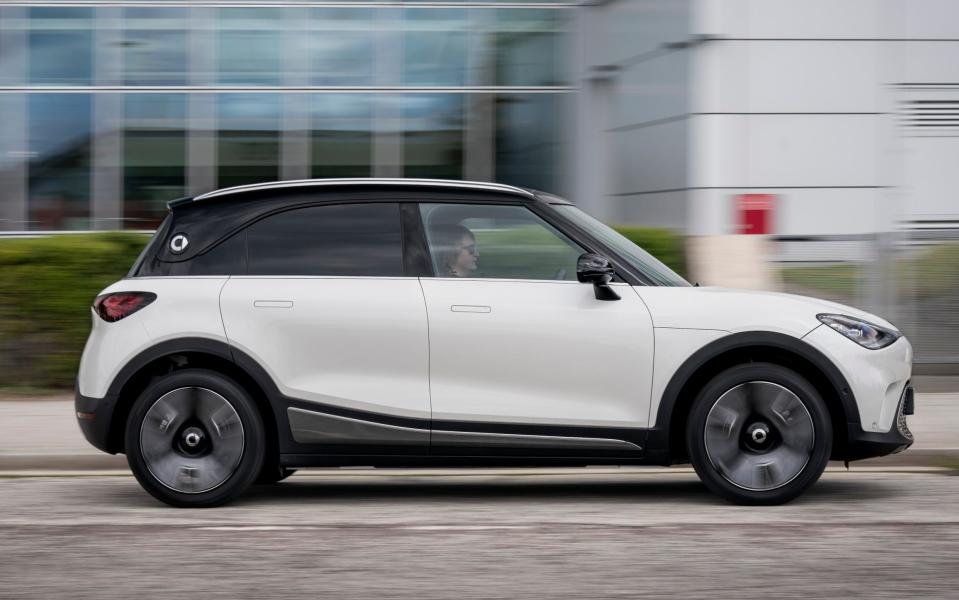
The example we’re testing here is a First Edition, all of which have now been sold, but you can buy something fairly similar by opting for the Premium model. This is worth having over and above the entry-level Pro+ because you get a heat pump as standard, which boosts the official range from 260 to 273 miles; take that to mean somewhere between 190 and 220 in the real world, depending on the weather.
DC charging maxes out at 150kW, which means a 10-80 per cent top-up will take just under half an hour on a suitably rapid public charger. Meanwhile, a full charge from 0 per cent will take 10 hours on a standard 7.4kW charging port at your “yard” (also known as your home).
These are not bad specs for the money. At £35,950 for the entry-level Pro+, rising by £3,000 for the Premium and a further £500 for the Launch Edition, the #1 looks pricey, but it’ll cost you almost as much to get into a Mini Electric, which offers half the range and far less space, while a Peugeot e-2008 in equivalent specification will cost you even more.
Inside, it’s just as individualistic as it is outside; there’s more than a hint of Jony Ive’s work for Apple here, with translucent white plastic (other colour and material choices are available) and soft, organic forms that wrap around the driver and passenger and swoop into a high centre console.
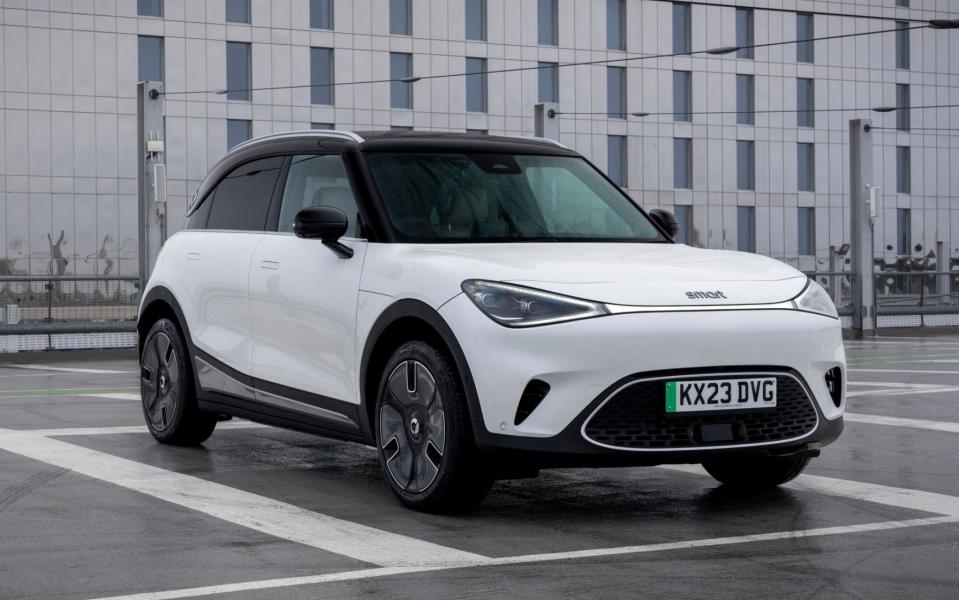
Yet this is not simply a case of function following form. Beneath the console sits a series of enormous cubbies, and there’s storage galore elsewhere, too. That tall, boxy rear roofline, meanwhile, yields a huge amount of space for your “crew” (friends and family) in the back, which means the #1 feels far more roomy than, say, a Mini Electric or a Fiat 500. Hardly surprising given that, at 4.27m long, the Smart is almost half a metre longer than the Mini and Fiat and is actually very similar in size to the Volvo EX30 that also shares its platform.
Not everything is sweetness and light inside, though. First, there’s the instrument binnacle – a letterbox slot in the dashboard through which you peer at tiny numbers and warning lights. Then there’s the boot, which at just 273 litres is rather small. You can slide the rear seats forward to increase this to 411 litres – but then, of course, you lose out on some of that useful rear leg room.
Outfoxed
All this, however, is trumped by the teeth-grindingly irritating infotainment system, which is very much a matter of style over substance. The very pretty on-screen graphics (including a rather cute but entirely pointless animated fox in the corner, who reacts when you prod him by dancing, curling up and going to sleep or playing with a ball) hide a complex menu structure, which is driven partly by the fact the infotainment screen has so many functions.
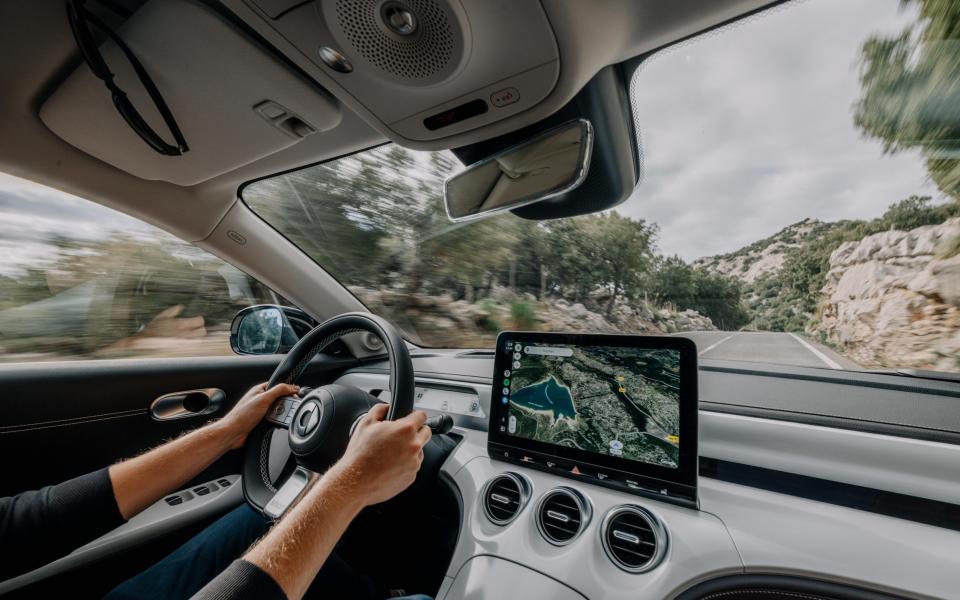
This is a corollary of the fact Smart has tried to remove almost every physical button from the cockpit, but it means you must hunt through the menus to find most of the minor and some of the major controls.
Even the rear fog light can only be turned on through the touchscreen, requiring several button presses, pulling your attention away from the road – probably just at the wrong moment, assuming the weather’s closing in.
The whole thing is “long” (too time-consuming). And faintly patronising, too – as though Smart is confident that the #1’s target market will lap up its snazzy touchscreen with its animated fox regardless of its poor usability.
Phone a friend
But this is a dangerous game for it to be playing, because we’re talking here about young adults, not kids. And of all the target demographics, it is they that are most likely to spot touchscreen software that’s not up to scratch. After all, the latest iPhone is always in demand over and above cheaper imitations not because it offers cutesy graphics, but because it’s slick, well designed and easy to use.
Fortunately, the driving experience is much better. True, the #1 feels a little unsettled around town, with a woodenness to the ride that allows just a few too many of the ruts and bumps of urban roads to come through.
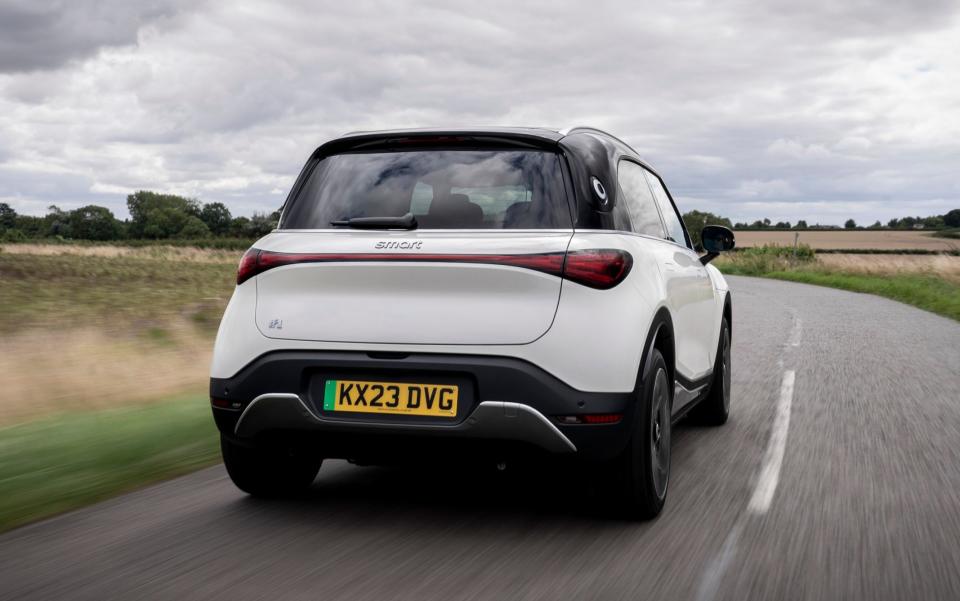
It calms down at speed, though, sitting well on the motorway, and it’s something of a surprise given the #1’s bluff profile to find that wind and road noise are pretty well controlled. Performance is rapid, but not explosive – if that’s what you want, you can always upgrade to the ballistic Brabus model – but the #1 feels faster than most of its rivals, as indeed it is.
The handling is engaging, too; surprisingly so given the tall, boxy looks; the #1 turns in eagerly and offers lots of grip and confidence-inspiring steering so that pressing on can induce an unexpected grin.
Verdict
So while those questionable usability decisions do spoil the #1 – as does the whiff of cynicism that brought them about – this is a car with plenty going for it; dynamically, it’s pretty good, it’s capable over longer distances, and it’s roomy enough for four grown adults – as long as they don’t bring too much stuff with them.
Of course, it’s chock full of personality, too. And while it would be a gross overstatement to call it affordable, it does at least look like better value than many rivals. As I said, it’s not for me. I’m just too “dry” (boring). But if you feel as though what’s been missing in your motoring life thus far is an animated fox on the touchscreen that’ll perform tricks on command, you’ll probably think the #1 is “on fleek” (perfect).
The facts
On test: Smart #1 Launch Edition
Body style: Five-door SUV
On sale: now
How much? £39,450 on the road (range from £35,950)
How fast? 112mph, 0-62mph in 6.7sec
How economical? 3.7mpkWh (WLTP Combined)
Engine & gearbox: N/A
Electric powertrain: AC permanent magnet synchronous motor with 66kWh battery, 150kW on-board charger, Type 2/CCS charging socket
Electric range: 273 miles (WLTP Combined)
Maximum power/torque: 269bhp/283lb ft
CO2 emissions: 0g/km (tailpipe), 29.5g/km (well-to-wheel)
VED: £0
Warranty: 3 years / unlimited miles
Spare wheel as standard: No (not available)
The rivals
Mini Electric Level 3
181bhp, 145 miles, £34,500 on the road
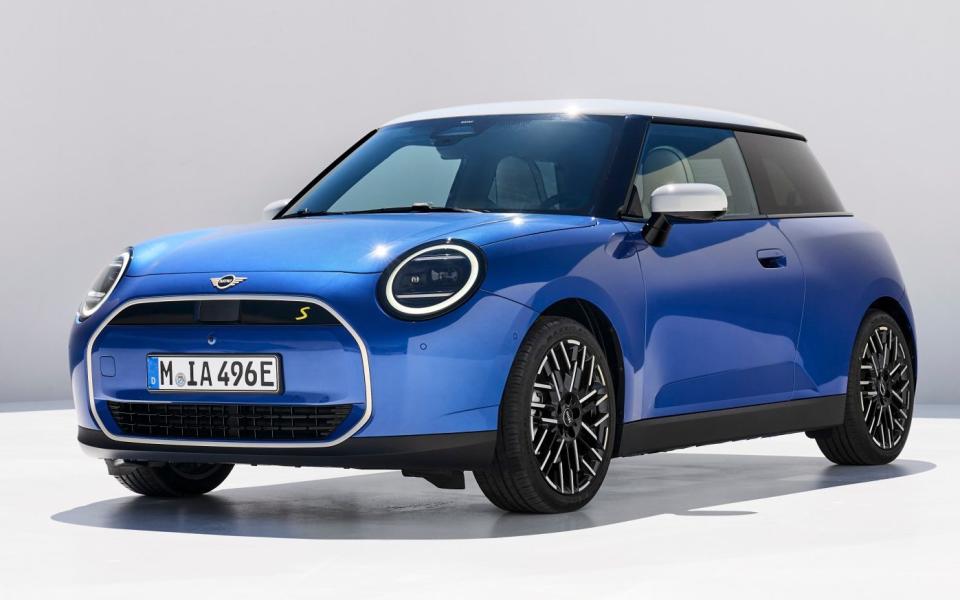
The Mini is a different kind of car to the Smart, but there’s only a £3,000-odd difference in price between the two like-for-like, and both are gunning for the same clientele. Of the two, the #1 feels like better value, with considerably more range, much more power and greater practicality all into the bargain – but the Mini is more fun to drive.
Peugeot e-2008 GT
154bhp, 250 miles, £40,700 on the road
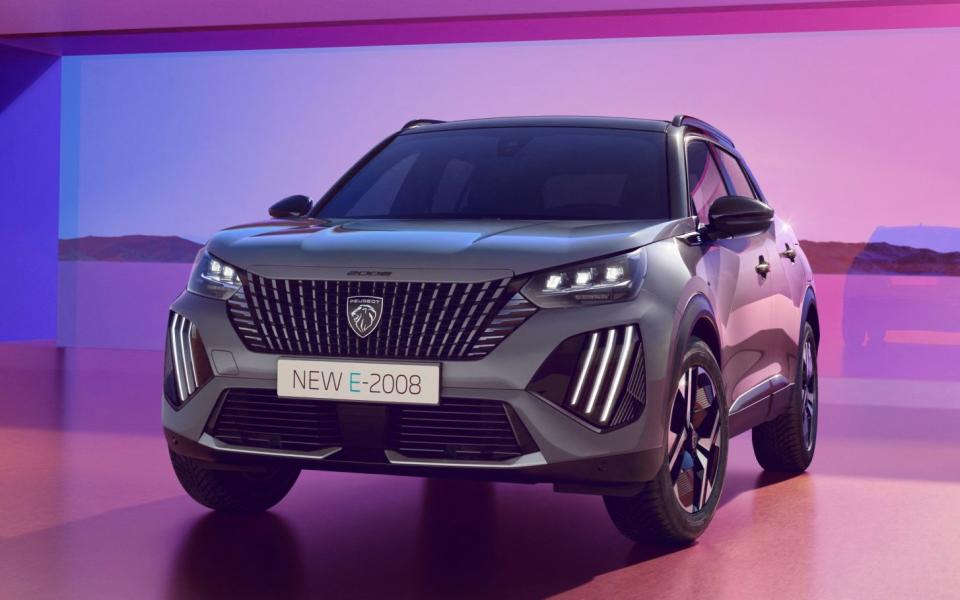
Once again, the #1 gives you more for your money here, on paper at least – it’s quicker, and will go further on a charge. The e-2008’s infotainment system is hardly a paragon of usability, meanwhile, and the screen is much smaller, but you do at least get more physical buttons. You get a larger boot, too, though the payoff is that the e-2008 isn’t quite as spacious in the back seats.
BYD Atto 3 Design
201bhp, 260 miles, £39,695 on the road
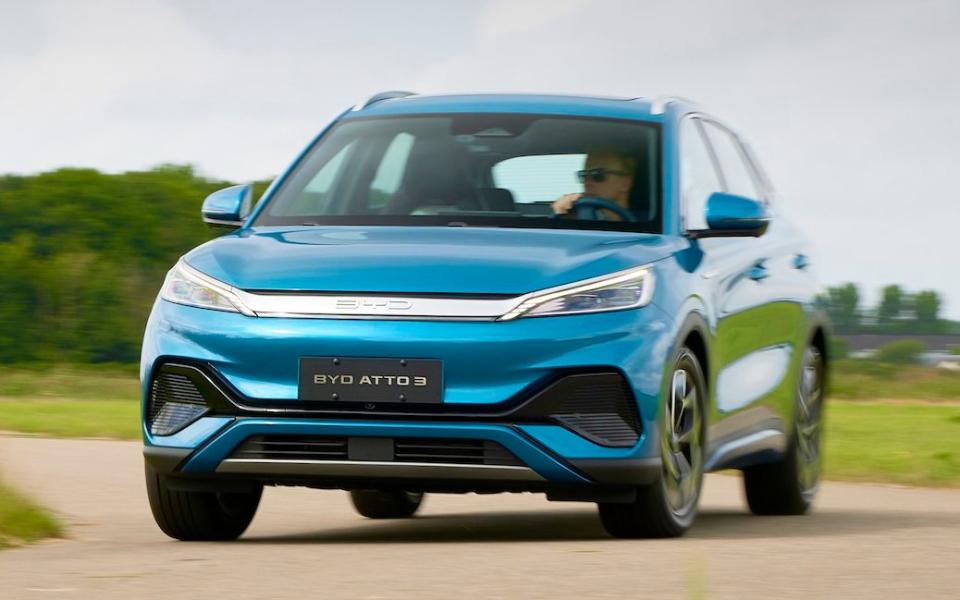
A recent arrival from China, the BYD Atto 3 can’t match the Smart’s sense of design on the outside, but the interior’s quirkiness – and that whopping, rotating touchscreen – will appeal to #1 buyers. This is actually a slightly larger car, too, so practicality is better all round, though it does cost more, and again you get more power and a slightly longer range with the #1.

